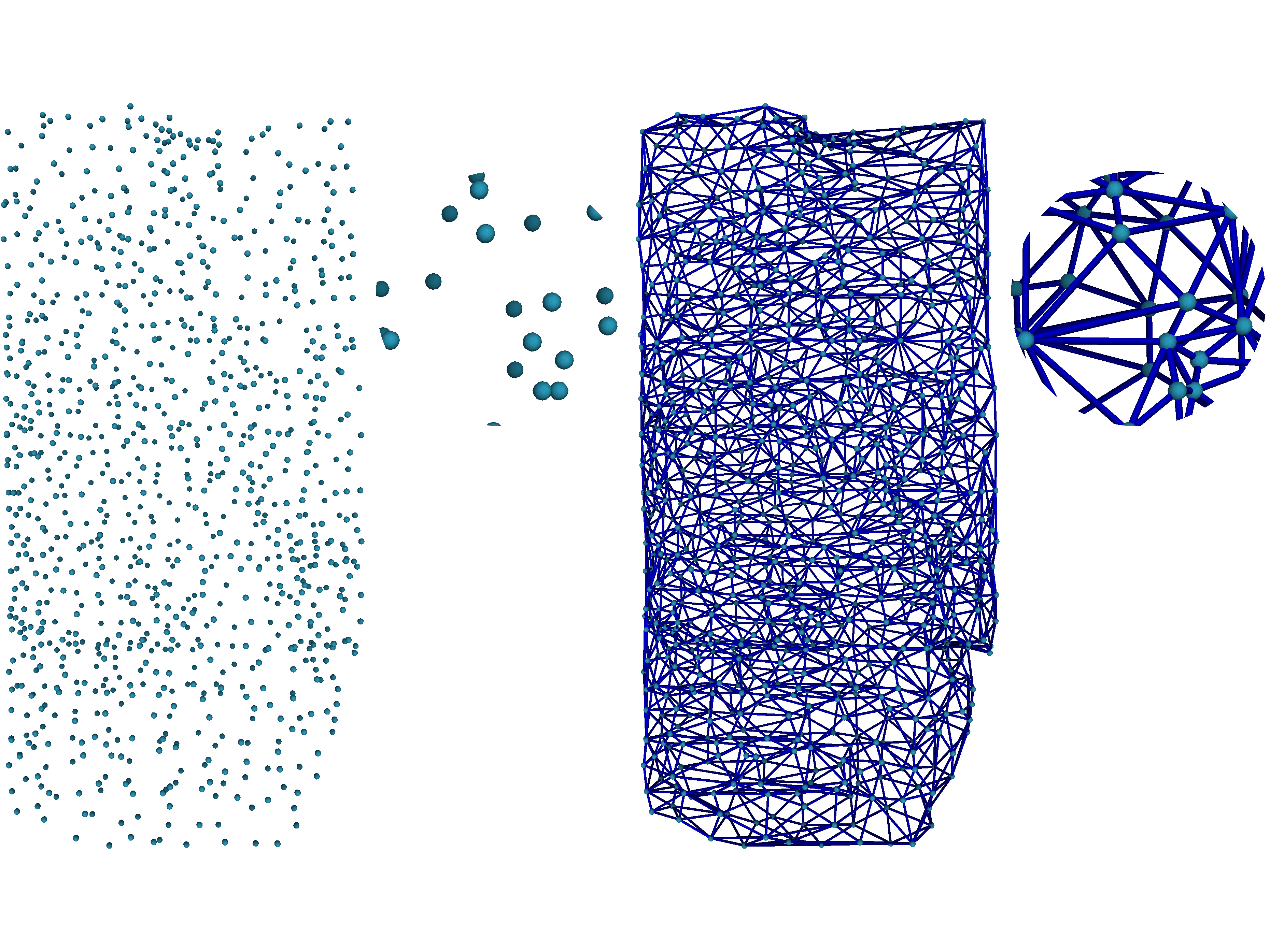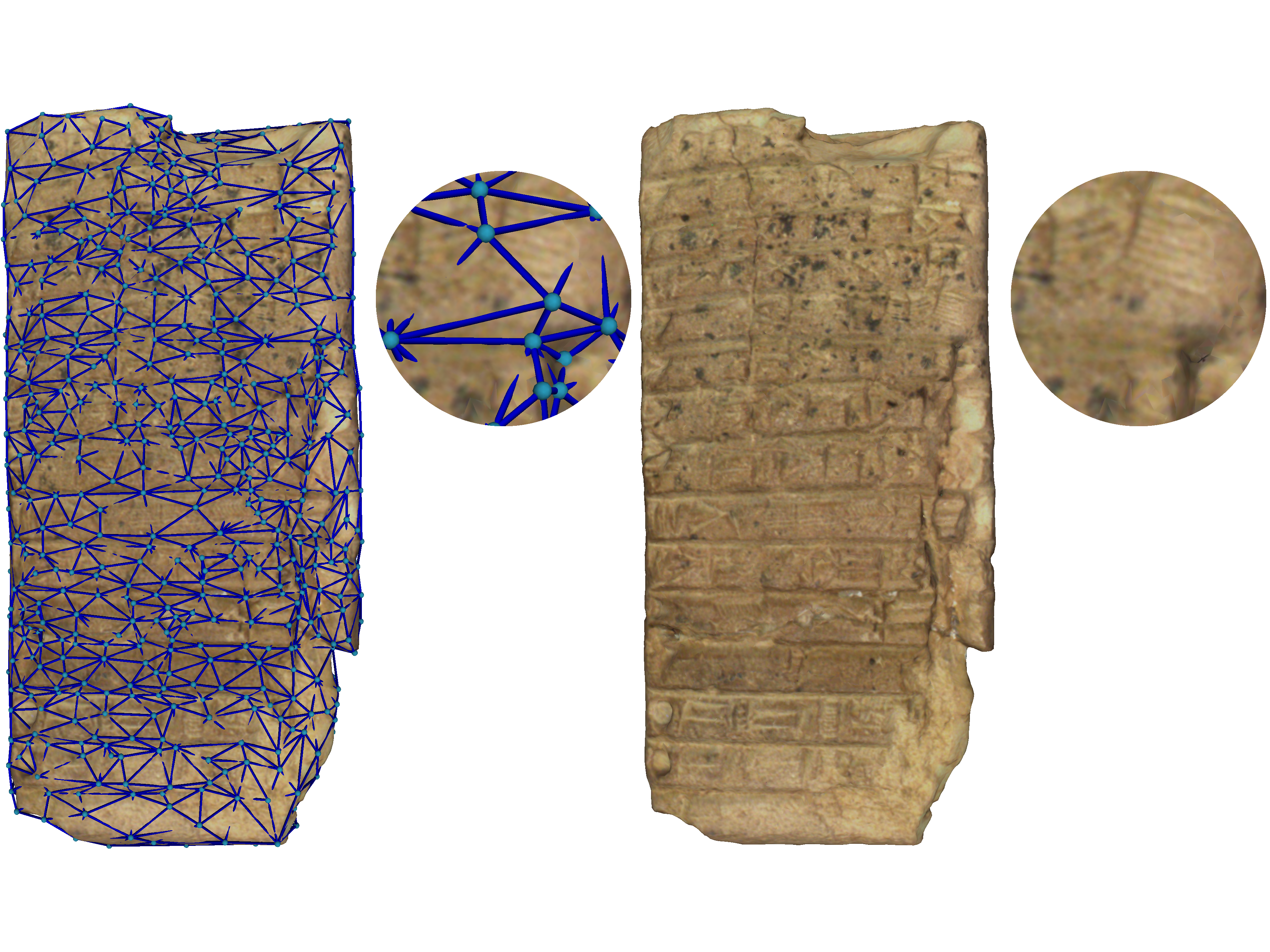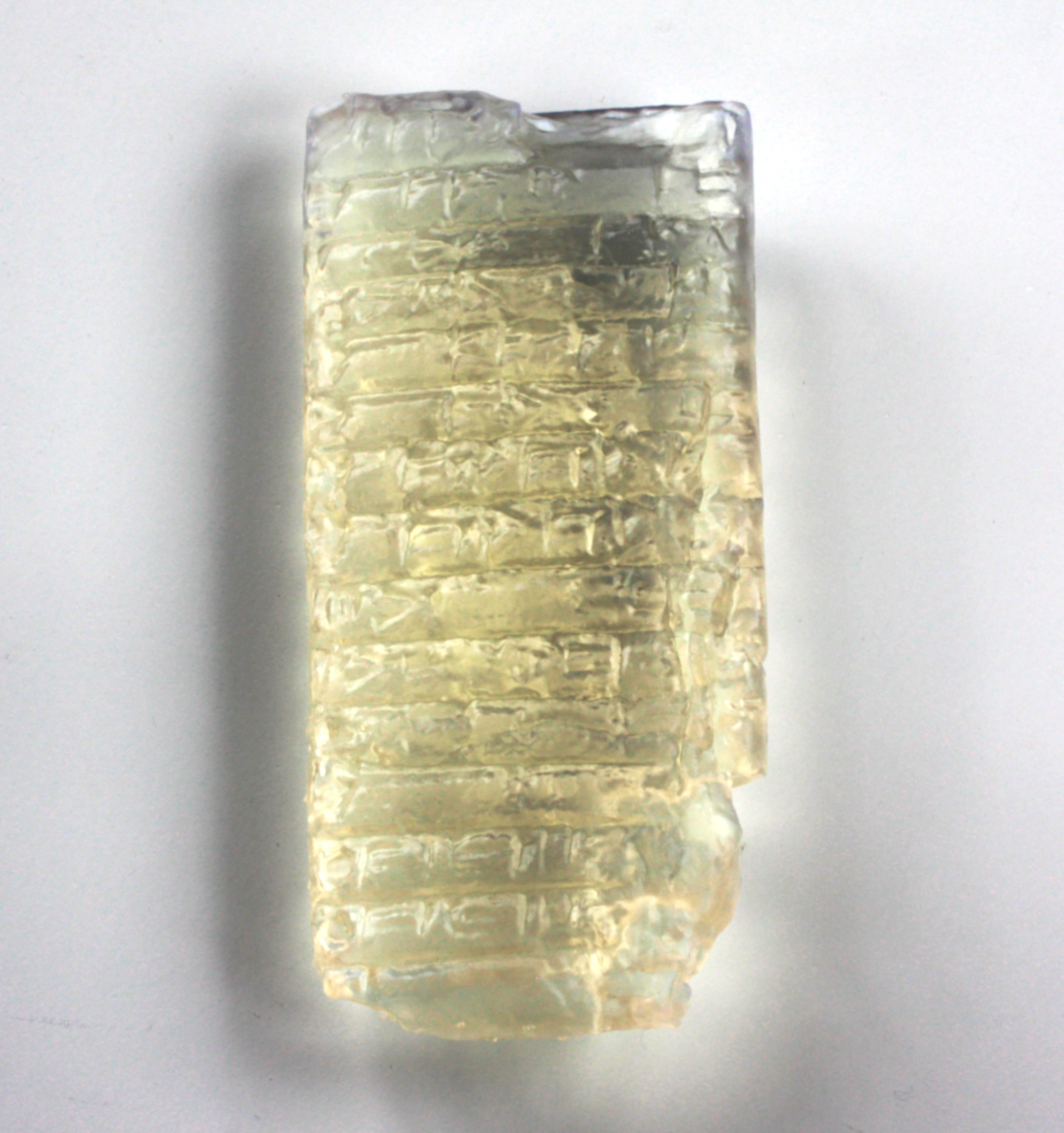3D Interactive Cuneiform Tablet
About this Object:
This virtual 3D model is a Liverpool World Museum cuneiform tablet. You can read about this tablet on the CDLI database.
3D Virtual Cuneiform:
3D Models are made of points called vertices that define the shape of objects (a 'point cloud'). Connected vertices form a surface from a 'wireframe' mesh of triangles. The triangles can be shaded according to the colour of the object and the virtual lighting. This is called rendering. We make the 3D model look real by wrapping it in pixels from photographs of the original object (known as 'textures').


More Information:
Read more about cuneiform and the Virtual Cuneiform Tablet reconstruction Project (and an activity for schools). You can read a Short History of the Cuneiform Collection in the World Museum Liverpool here and can read more about the cuneiform tablet collection of Liverpool World Museum in a book written by Dr Eric Cripps. The collection of catalogued tablets at Liverpool World Museum can be viewed here on the CDLI.
3D Printing:
With 3D models we can create 3D printed copies. Here is a transparent resin 3D print of the tablet.
Download a copy:
Also, with photographic texturing:
Acknowledgement:
Our thanks to Dr Ashley Cooke, Head of Antiquities at Liverpool World Museum for supporting this project.